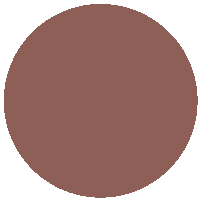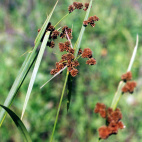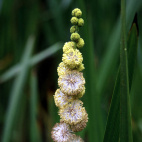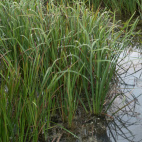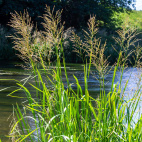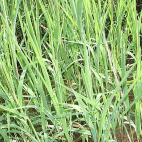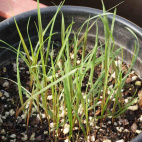Color
Availability
USDA Zone
Region
Type
Duration
Season
Germination
Soil
Sunlight
Height
Narrow Your Search
Color
Availability
USDA Zone
Region
Type
Duration
Season
Germination
Soil
Sunlight
Height
US Native Wetland Grass Seeds
-
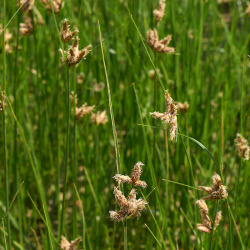 Chairmaker's Rush Seeds
Scirpus pungens
The stems of this native rush were actually used for weaving sturdy chair seats in years gone by. This perennial is a widespread species and is used extensively in wetland restoration projects.Quick Viewx
Chairmaker's Rush Seeds
Scirpus pungens
The stems of this native rush were actually used for weaving sturdy chair seats in years gone by. This perennial is a widespread species and is used extensively in wetland restoration projects.Quick ViewxChairmaker's Rush Seeds
Scirpus pungens
The stems of this native rush were actually used for weaving sturdy chair seats in years gone by. This perennial is a widespread species and is used extensively in wetland restoration projects.
$3.48 Pkt - $40.00 / Oz -
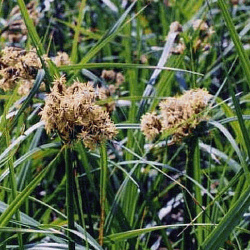 Dark Green Bulrush Seeds
Scirpus atrovirens
Because of it's aquatic nature, this native rush needs a constant supply of water. It is a common sight in wetlands, marshes, lakes, and ponds. This hardy perennial grows best in the cool seasons of spring and fall.Quick View$2.98 Pkt - $11.88 / Oz
Dark Green Bulrush Seeds
Scirpus atrovirens
Because of it's aquatic nature, this native rush needs a constant supply of water. It is a common sight in wetlands, marshes, lakes, and ponds. This hardy perennial grows best in the cool seasons of spring and fall.Quick View$2.98 Pkt - $11.88 / Oz -
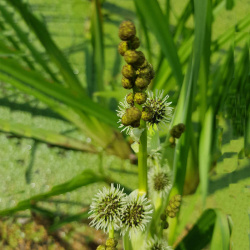 Great Bur Reed Seeds
Sparganium eurycarpum
Though it sometimes masquerades as just another grass, this wetland plant produces unusual globular white flowers that set it apart from the rest. This native plant also makes an excellent choice for dried flower arrangements.Quick Viewx
Great Bur Reed Seeds
Sparganium eurycarpum
Though it sometimes masquerades as just another grass, this wetland plant produces unusual globular white flowers that set it apart from the rest. This native plant also makes an excellent choice for dried flower arrangements.Quick ViewxGreat Bur Reed Seeds
Sparganium eurycarpum
Though it sometimes masquerades as just another grass, this wetland plant produces unusual globular white flowers that set it apart from the rest. This native plant also makes an excellent choice for dried flower arrangements.
$3.25 Pkt - $11.03 / Oz -
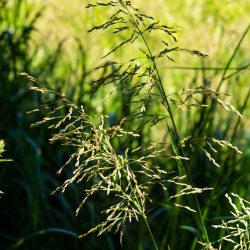 Reed Manna Grass Seeds
Glyceria grandis
An essential member of the wetland community, this native grass flourishes in marshes or along streams. It is a cool-season grass and is easy to grow, so it is a popular choice if a taller grass is desired in a wet area.Quick Viewx
Reed Manna Grass Seeds
Glyceria grandis
An essential member of the wetland community, this native grass flourishes in marshes or along streams. It is a cool-season grass and is easy to grow, so it is a popular choice if a taller grass is desired in a wet area.Quick ViewxReed Manna Grass Seeds
Glyceria grandis
An essential member of the wetland community, this native grass flourishes in marshes or along streams. It is a cool-season grass and is easy to grow, so it is a popular choice if a taller grass is desired in a wet area.
$3.25 Pkt - $21.00 / Oz -
 Rice Cut Grass Seeds
Leersia oryzoides
This native grass has rough foliage that feels sharp because of the many tiny barbs on the underside of each leaf. This perennial is a common wetland grass that is used for many restoration projects.Quick Viewx
Rice Cut Grass Seeds
Leersia oryzoides
This native grass has rough foliage that feels sharp because of the many tiny barbs on the underside of each leaf. This perennial is a common wetland grass that is used for many restoration projects.Quick ViewxRice Cut Grass Seeds
Leersia oryzoides
This native grass has rough foliage that feels sharp because of the many tiny barbs on the underside of each leaf. This perennial is a common wetland grass that is used for many restoration projects.
$3.25 Pkt - $16.57 / Oz -
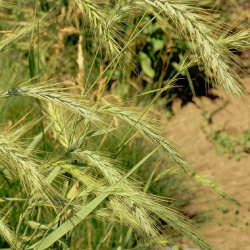 Virginia Wild Rye Seeds
Elymus virginicus
This perennial grass is not closely related to agricultural rye but is a native grass that is used in many wetland plantings. It is popular because it can tolerate anything from full sun to the woodland setting, making it a versatile species. It is a cool-season grass that is very cold hardy.Quick Viewx
Virginia Wild Rye Seeds
Elymus virginicus
This perennial grass is not closely related to agricultural rye but is a native grass that is used in many wetland plantings. It is popular because it can tolerate anything from full sun to the woodland setting, making it a versatile species. It is a cool-season grass that is very cold hardy.Quick ViewxVirginia Wild Rye Seeds
Elymus virginicus
This perennial grass is not closely related to agricultural rye but is a native grass that is used in many wetland plantings. It is popular because it can tolerate anything from full sun to the woodland setting, making it a versatile species. It is a cool-season grass that is very cold hardy.
$3.48 Pkt - $5.96 / Oz -
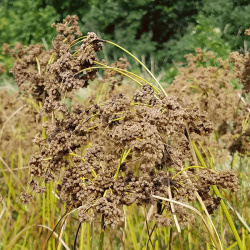 On Sale!
Wool Grass Seeds
Scirpus cyperinus
As the name suggests, this native wetland rush produces a wooly material in its mature seed heads. It makes a unique addition to a water garden or stream bank.Quick View$3.25 Pkt - $15.95 / Oz
On Sale!
Wool Grass Seeds
Scirpus cyperinus
As the name suggests, this native wetland rush produces a wooly material in its mature seed heads. It makes a unique addition to a water garden or stream bank.Quick View$3.25 Pkt - $15.95 / Oz
